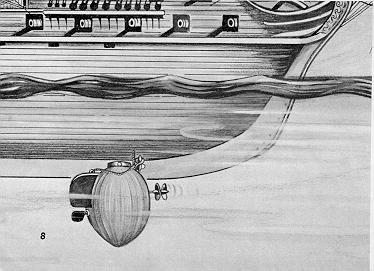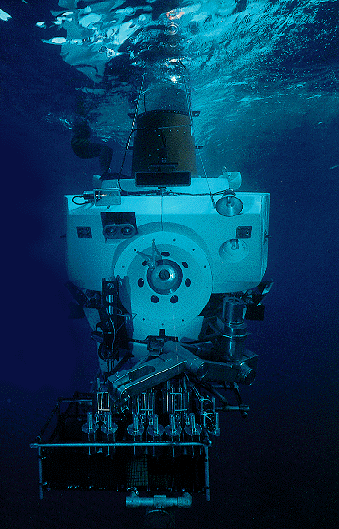As human beings became less concerned with survival, they were able to shift their thoughts to how to make their lives more comfortable. Human beings transitioned from being hunters and gathers to being farmers and shepherds. New tools (hoes and rakes) were invented and new discoveries (cultivation and fertilization) made.
And so, the pattern began. As life got easier for man, man had more time for other pursuits. We see this pattern repeat itself throughout history; and it continues to repeat itself today. It is man's constant pursuit of a better life and a better understanding of life that lead to new inventions and new discoveries.
In this lesson you will be introduced to an example of how man's quest for knowledge caused human beings to create inventions or make discoveries, and how man's desire for even MORE knowledge inspired human beings to improve upon these inventions and continue to make subsequent discoveries.
Once you have read through the example provided, you will go on a quest to find other examples of how man's search for an improved life, or expanded knowledge, led human beings to make other discoveries or create other inventions.
And, finally, at the end of this lesson, you will select one of the examples you located that you found most exciting and trace changes in the technology, or subsequent discoveries in the field, that changed the way human beings lived or changed their view of reality.
An Example: Underwater Exploration
Exploration of the undersea world in search of food and treasure can be traced back to ancient
times. Mother-of-pearl jewelry (dated back to 4500 B.C.), which must have been gathered by
divers holding their breath, was discovered in the course of conducting an archeological dig at a Mesopotamian site.
Of course, free diving (by holding one's breath), did not allow the diver to venture too deep.
Since these early times many underwater exploration devices have been invented to allow human beings to go deeper into
the depths of the oceans. And, as our process above states, with each new underwater exploration
invention, human beings were able to learn more and more about the undersea world.
Your Quest For Knowledge
Now that you've seen an example of how a technological evolution has enhanced man's picture of
reality, it's your turn to go out onto the Interent and search for other examples of how
technological advances can shape the way human beings view their world.
Use the links below to begin your search. As you visit each of the sites, jot down the topics
of most interest to you. And, be sure to note which link connected you to your favorites!
INVENTORS
EXPLORERS
SCIENTISTS
Now, that you have found several topics that you find particularly interesting, use any or
all of the search engines below to gather more information about these personally significant
inventions and discoveries. As you gather more information on each topic, try to trace the
technological evolution of each one. Some of your topics will show marked progression. Others
will progress for a time, and then their evolution will end. Ask yourself the following questions
when you isolate a topic that does show continued evolution:
SEARCH ENGINES

Diving Bells
Sir Edmund Halley of the British Royal Society, built the diving bell picture to
the left in 1691. This device was made of lead-coated wood and had a glass top
which permitted light to enter the bell. Used air was exhausted via a vent and
a barrel of fresh air was provided to replenish the diver's air supply. As you can
see, the diver could not move very far from the bell because the bell contained the
air supply. Therefore, the diver's ability to explore was limited.

Early Submarines
The submarine was invented in 1624 by Cornelius van Drebbel, a Dutch inventor and
engineer employed by the British Navy. Basically, van Drebbel's submarine was just
a leather-covered rowboat which utilized water-tight seals around the oars.
The first American submarine, the Turtle (left), was created by David Bushnell in 1776, and
was powered by a pedal-operated screw. Engineers gradually came up with better ways to power their underwater craft. The
first type of power, other than man-power, was steam. The Hunley, a Confederate boat
used during the Civil War, was such a steam-powered submarine.

Modern Submarines
John Holland, was the first to conceive of employing the electric and the internal combustion engine to power
a submarine. In 1900, Holland sold the U.S. Navy its first submarine, the USS Holland, which was powered
by a 45-horsepower internal combustion engine. The diesel engine replaced the gasoline engine in 1912, when
it was first installed aboard USS Skipjack (SS 24) and Sturgeon (SS 25). The oil-burning engine required
no complicated ignition, or sparking systems. It produced fewer noxious fumes and was more economical.
The diesel engine and the electric battery remained the power source for submarines until nuclear power was
introduced. Today's nuclear-powered subs (see photo on left) can go deeper and stay
down longer than any of their predecessors.

Deep Submergence Vessels (DSV)
Deep submergence vessels have really openned up the underwater world to scientists and
explorers. The DSV Alvin (on your left), commissioned in 1965 and still a working
vessel today has been instrumental in deep ocean exploration and research. A few of Alvin's
missions have involved exploration of the Mid-Atlantic Ridge to study seafloor spreading
and plate tectonics and dives to the East Pacific Rise which revealed hot water vents or
"black smokers" spewing forth super-heated water at 350 degC (650 degF).
http://www.si.edu/resource/faq/nmah/invent.htm
http://www.discovery.com/past/stories/moreinventors.html
http://www.cln.org/themes/inventors.html
http://www.greencastle.k12.in.us/stark/explorers.htm
http://www3.ns.sympatico.ca/educate/explore.htm
http://www.win.tue.nl/cs/fm/engels/discovery/index.html
http://www.sjsu.edu/depts/Museum/aamenu.html
http://www.lib.lsu.edu/lib/chem/display/faces.html
http://www.ai.mit.edu/people/ellens/Gender/wom_and_min.html
http://www.asap.unimelb.edu.au/hstm/hstm_biographical.htm
http://www.yahoo.com
http://www.altavista.com
http://www.dogpile.com
http://www.google.com
http://www.excite.com
http://www.hotbot.com
http://www.webcrawler.com
 Blast Off!
Blast Off!